Phileas Fogg famously traveled around the world in 80 days in the novel by Jules Verne—but on this Around the World Private Jet Expedition from TCS World Travel, you’ll easily beat his record. In just 24 days, you’ll circumnavigate the globe and set foot on five of seven continents.
This trip, which departs on either October 10, 2021 or December 30, 2021, includes iconic natural wonders like Australia’s Great Barrier Reef and Tanzania’s Ngorongoro Crater, both of which showcase dazzling displays of diverse wildlife. The itinerary is long on fabled human wonders as well, with stops at the ancient sites of Machu Picchu, Easter Island, Angkor Wat, and Petra.
Between each stop, you’ll fly aboard a specially outfitted private jet with your roughly 50 fellow guests. The flawless service of the TCS World Travel crew will assure that you will arrive at each destination ready to continue exploring. And the trip’s experts—distinguished college professors and professional photographers—will bring the histories, cultures, peoples, and wildlife of every destination to life.
If you take advantage of TCS World Travel’s new Book with Confidence benefit, you’ll even have the option to cancel your trip for any reason when you book before December 31, 2020. Providing you with flexibility for your travel plans, TCS allows you to cancel your reservation up to six months before departure if you deposit 50 percent of the trip cost at the time of booking.
Itinerary / 24 Days

DAY 1Depart from Fort Lauderdale
The Ritz-Carlton is located just a few blocks north of Fort Lauderdale’s Olas Boulevard, which features an abundance of dining and shopping options. However, you may be tempted to remain ensconced in the comfort of the hotel and enjoy some downtime before your odyssey begins. A chaise by the heated infinity-edge pool or an oceanfront cabana are ideal ways to gently ease into your trip.
When you arrive at the airport for your first flight, you’ll board a private jet that has been reconfigured to include only 52 spacious leather seats (compared to 239 seats on a typical commercial plane). On the six-and-a-half-hour flight to Peru, you’ll become familiar with the gracious service of your flight crew. A noise-canceling headset will also be provided, assuring that you’ll arrive in Peru rested and ready to experience the country.
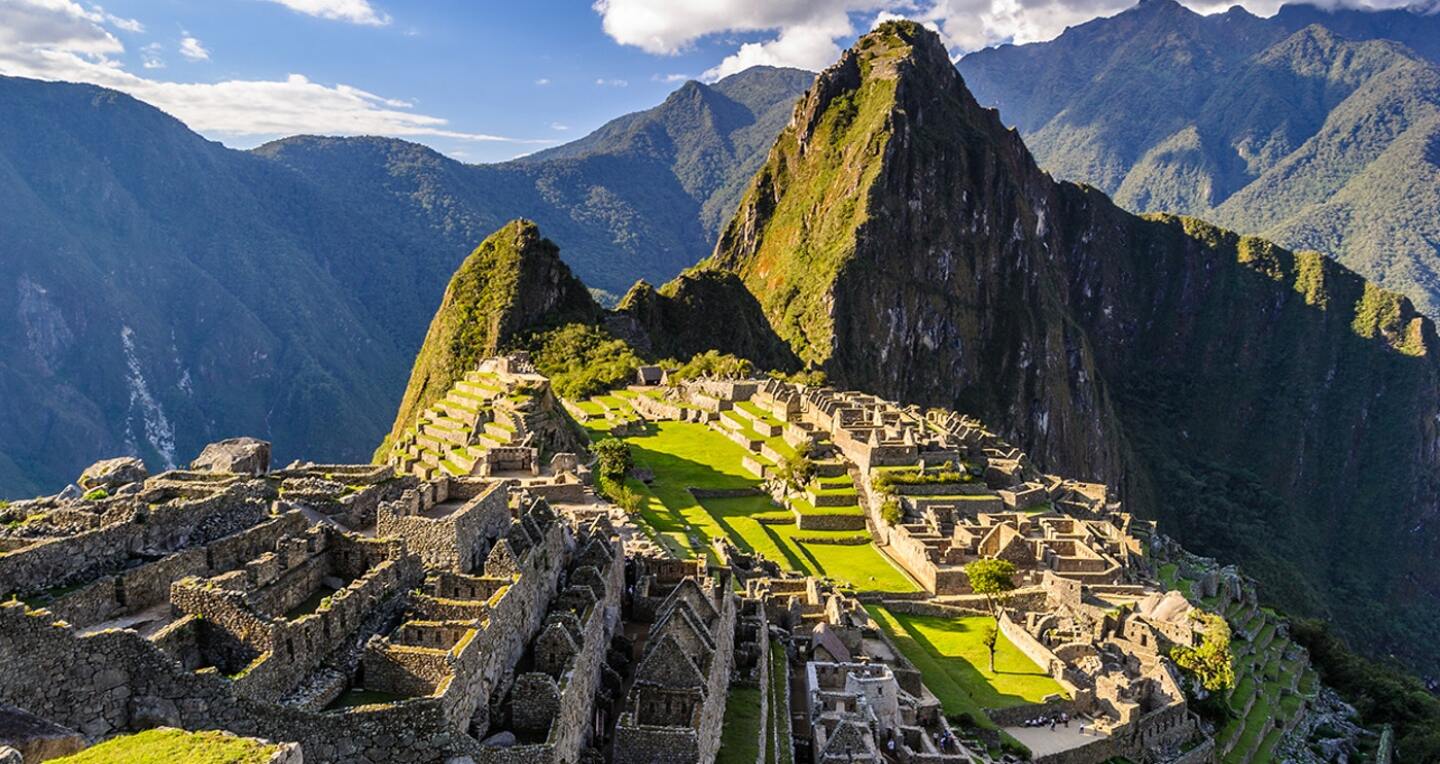
DAYS 2 TO 4Peru
If you pick the Macchu Picchu option, you’ll travel to Cusco and spend two nights in the legendary Belmond Palacio Nazarenas. The hotel is located in a 16th-century convent, and its bar, restaurant, spa, and 55 guest suites are located around a number of cloistered courtyards, creating a quiet sanctuary in the historic heart of the city.
From there, you’ll ride to Machu Picchu aboard the historic Hiram Bingham train. Thanks to an early arrival, you’ll have time to explore the palaces, temples, and terraced gardens of this fascinating city that dates from the 15th century. After exploring the site, you’ll enjoy afternoon tea at the Belmond Sanctuary Lodge before returning to Cusco. While Machu Picchu is the highlight of your time in this part of Peru, you’ll also have opportunities to meet weavers in Chinchero and learn about their craft, see the historic buildings of Cusco, and visit Sacsayhuaman—an Inca fortress just outside Cusco.
Travelers who opt instead to visit Peru’s North Coast will discover a stunningly beautiful region and learn about several pre-Columbian cultures that predate the Inca. Your base for one night will be the Costa del Sol Trujillo Centro, located on the city’s main plaza, and you can take advantage of the pool, sauna, and gym. During your time on the North Coast, you can visit sites like the Moche pyramids, built around 450 C.E., and Chan Chan, a 500-acre palace complex that also dates from the first millennium C.E.
You’ll spend your second night back in Lima, at the Belmond Miraflores Park. Located atop an oceanside bluff with views of the Pacific Ocean, the luxury property is close to the galleries, boutiques, and restaurants of Lima’s Miraflores neighborhood.

DAYS 5 AND 6Easter Island
During your time on the island, you’ll visit some of the sites with especially noteworthy concentrations of moai, like Ahu Tahai, Ahu Tongariki, and the Rano Raraku quarry, where there are more than 400 of them in various stages of completion. The heads were carved between roughly 1000 C.E. and the 1600s, but their significance is the object of much speculation, since the civilization that created them collapsed, leaving few clues for archaeologists.
The stone heads are the most famous sights on Easter Island, but there will also be opportunities to explore the island through a photography class or time to relax on one of its beaches. At the end of each day, you’ll return to the Hangaroa Eco Village & Spa. This unique property was inspired by Orongo, a Rapa Nui ceremonial site, and built of local materials like clay, cypress logs, and volcanic stones. (Note that some travelers may stay in a different, comparable hotel.)
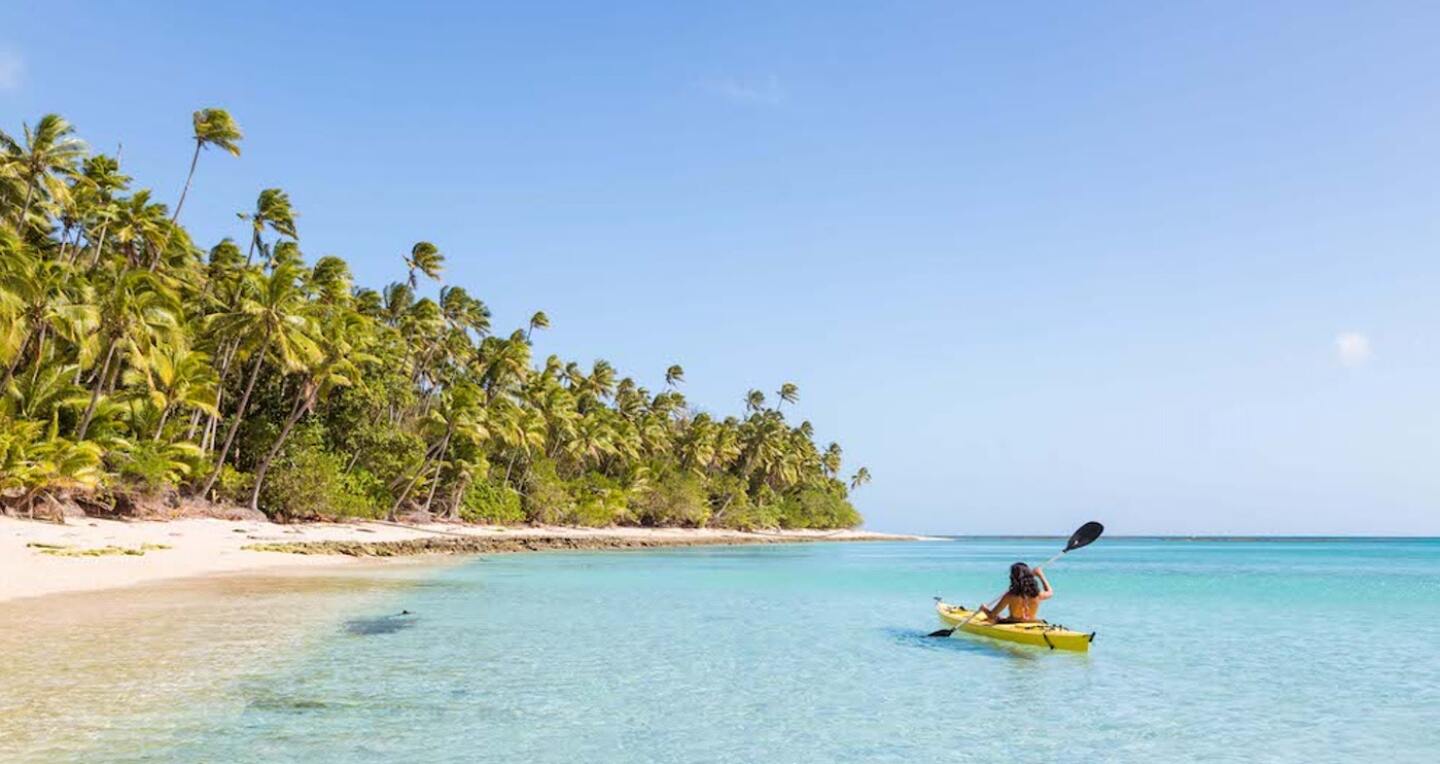
DAYS 7 AND 8Fiji
Once in Fiji, you’ll be enchanted by the sparkling white sand and clear blue waters of picturesque Denarau Island, where you can enjoy some peace and quiet at the Sofitel Fiji Resort & Spa. Set on 26 acres of gardens and private beachfront, the hotel offers elegant restaurants full of local flavors, a luxurious spa, and a range of exciting water-sport activities. Savor views of Nadi Bay from the beach, indulge in a pampering spa treatment, take a fitness class on the sand, or play a round or two of tennis on the outdoor court before continuing on to your next destination.

DAYS 9 AND 10Great Barrier Reef
On a private cruise, you’ll explore some of the northern reaches of the Great Barrier Reef, the world’s largest coral reef system and the largest living structure on earth. Stretching for more than 1,300 miles, the reef is actually composed of some 2,900 smaller reef systems, as well as 900 islands. You’ll take a glass-bottom boat out to see many of the exotic marine species that live along the reef, including sea turtles, feather stars, and reef sharks. You will also have the chance to snorkel or scuba dive.
There’s plenty to see on dry land, too. If you aren’t already a passionate botanist, you may become one after a visit to the Botanical Ark—a private ethno-botanical garden focused on the connections between the plants of the rain forest and the people who live there. You’ll learn about the medicinal and other uses of various rain forest species, and take an unforgettable walk with an Aboriginal guide through the Mossman Gorge.
You’ll also have time to explore Port Douglas, a relaxed and casual seaside town with miles of beaches as well as plenty of shopping and dining options.
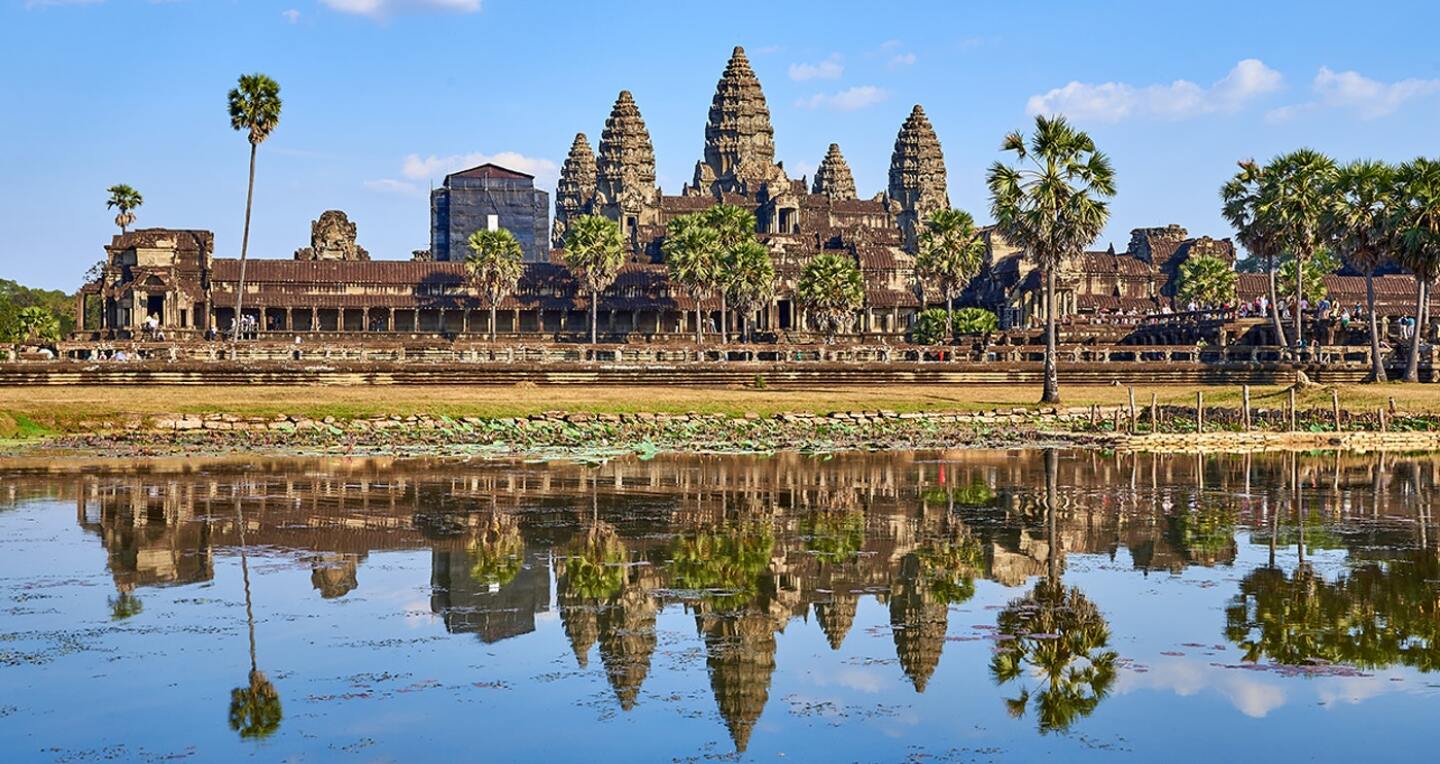
DAYS 11 TO 13Angkor Wat
Angkor Wat, of course, is the 12th-century Hindu city that extends over some 400 acres and includes countless temples, palaces, and monasteries—and your excursion here begins early, before the heat becomes too intense. You’ll also see some Buddhist monks this morning too, on their daily ritual of gathering alms. The nearby Temple of Ta Prohm has been left largely in the state it was in when it was first discovered, with its walls overgrown by jungle plants, creating a magical atmosphere. Highlights at Angkor Thom, just to the north of Angkor Wat, include the elaborately decorated Bayon temple and an army of stone warriors on the Terrace of the Elephants.
Other excursions provide glimpses of contemporary life in Cambodia. On a cruise around Tonle Sap, Asia’s largest freshwater lake, you’ll have a chance to visit waterfront villages. During an outing in Siem Reap, you can shop for gifts and souvenirs at the sprawling markets. You may also opt to visit the showroom of Artisans d’Angkor, which trains young artisans in traditional crafts, helping to ensure they’ll live on for another generation. Finally, you’ll enjoy a dinner, with cocktails and traditional entertainment, at the magnificent, 12th-century Thommanon Temple.
Your hotel during your stay in Cambodia, the Raffles Grand Hotel d’Angkor, dates to another fascinating era in the country’s history, when it was part of French Indochina. The dark wood floors, ceiling fans, and art deco influences reflect the period when it opened, in 1932. It’s been a favorite of visitors to Siem Reap ever since, with Charlie Chaplin, Charles de Gaulle, and Princess Margaret among the guests who slept here.

DAYS 14 AND 15Taj Mahal and Jaipur
You’ll also have the chance to immerse yourself in the vibrant architecture, culture, and cuisine of Jaipur. Nicknamed the “Pink City” for its rose-colored buildings, the destination is home to such royal sites as Hawa Mahal and Amber Fort, as well as several bustling bazaars, full of everything from traditional blue pottery to hand-printed textiles and meenakari jewelry. If you want to learn more about the complex, fiery flavors of Indian cuisine, take a hands-on cooking class at your hotel, Rambagh Palace.
Built in 1835, Rambagh Palace served as the home of Jaipur’s royal family until 1957 and includes more than 47 acres of stunning gardens. In addition to luxurious rooms, you can look forward to a holistic spa and several unique bars and restaurants.
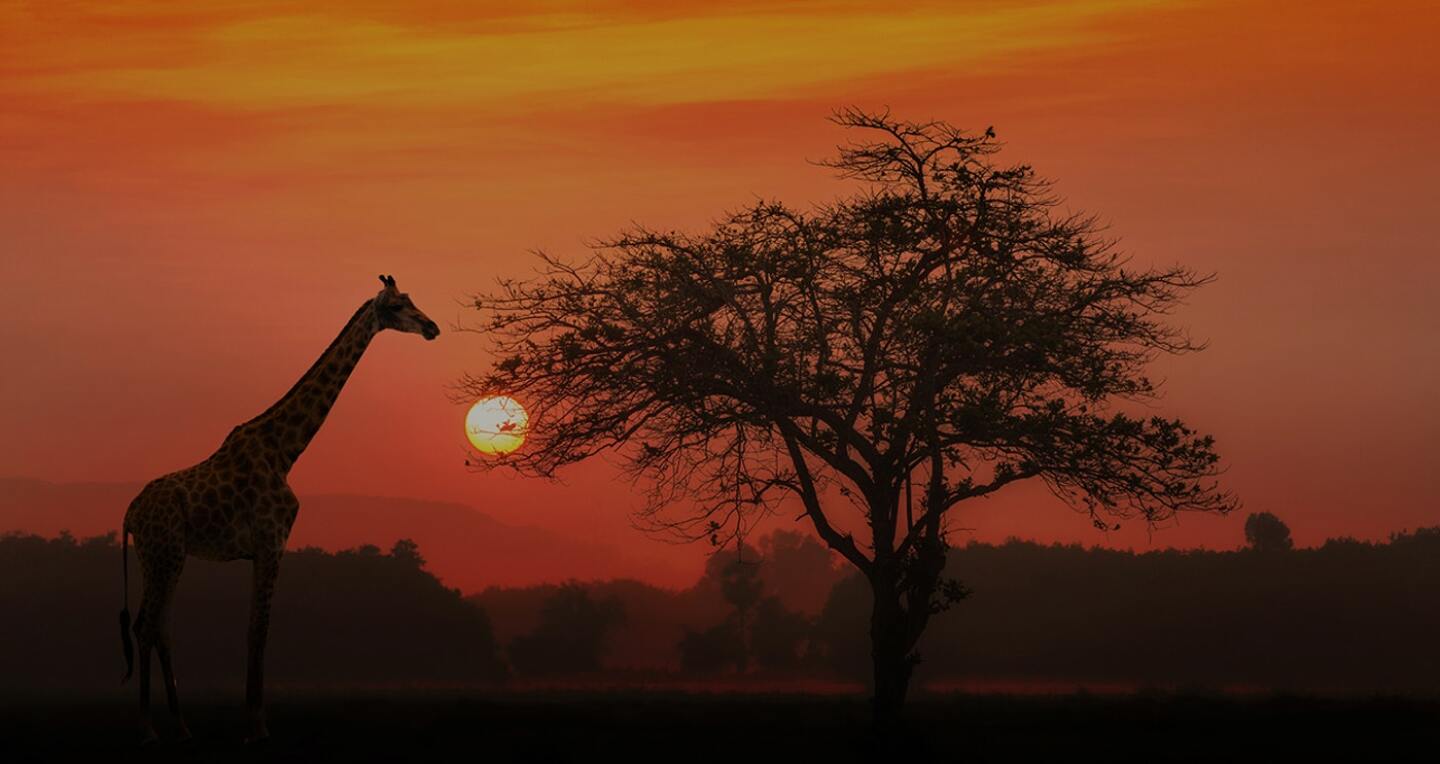
DAYS 16 TO 18Serengeti or Ngorongoro Crater, Tanzania
Your group will break into two today, as you did in Peru. You can’t go wrong with either of the two choices, the vast plains of the Serengeti or Ngorongoro Crater, the world’s largest unbroken caldera. The Serengeti is the site of the world’s largest animal migrations, with hundreds of thousands of zebra, gazelles, wildebeests, and other animals making their way across it each year. The Ngorongoro Crater covers an area of more than 100 square miles, and its interior is covered in grassland that’s home to a remarkable diversity of wildlife.
If you opt to join the Serengeti group, you’ll stay at the Elewana Serengeti Migration Camp, tucked between the famous Grumeti River and the starting point of the Great Migration. Here, each luxurious tent is surrounded by its own 360-degree deck, from which you can enjoy game sightings and the sounds of the bush. Between game drives, you can sip drinks in the main tent, take a dip in the swimming pool, or indulge in a delicious meal from the on-site restaurant.
If you head to the Ngorongoro Crater instead, your accommodations there will be equally stunning. The &Beyond Ngorongoro Crater Lodge sits on the rim of the caldera and includes 30 suites divided into three different camps. The suites have banana-leaf roofs and an eclectic décor, with a mix of African art and Victorian antiques. Personal butlers serve each camp, ensuring a perfect stay.
There will be plenty of game drives with either option, but depending where you stay, you might also choose to visit a Maasai village or take a hot-air balloon ride. If you’re lucky, you may be able to spot all of the “Big Five”—lions, leopards, rhinoceroses, elephants, and Cape buffalos—during your stay. If you don’t see all of them, you’ll have to make plans to return to Tanzania on another trip.
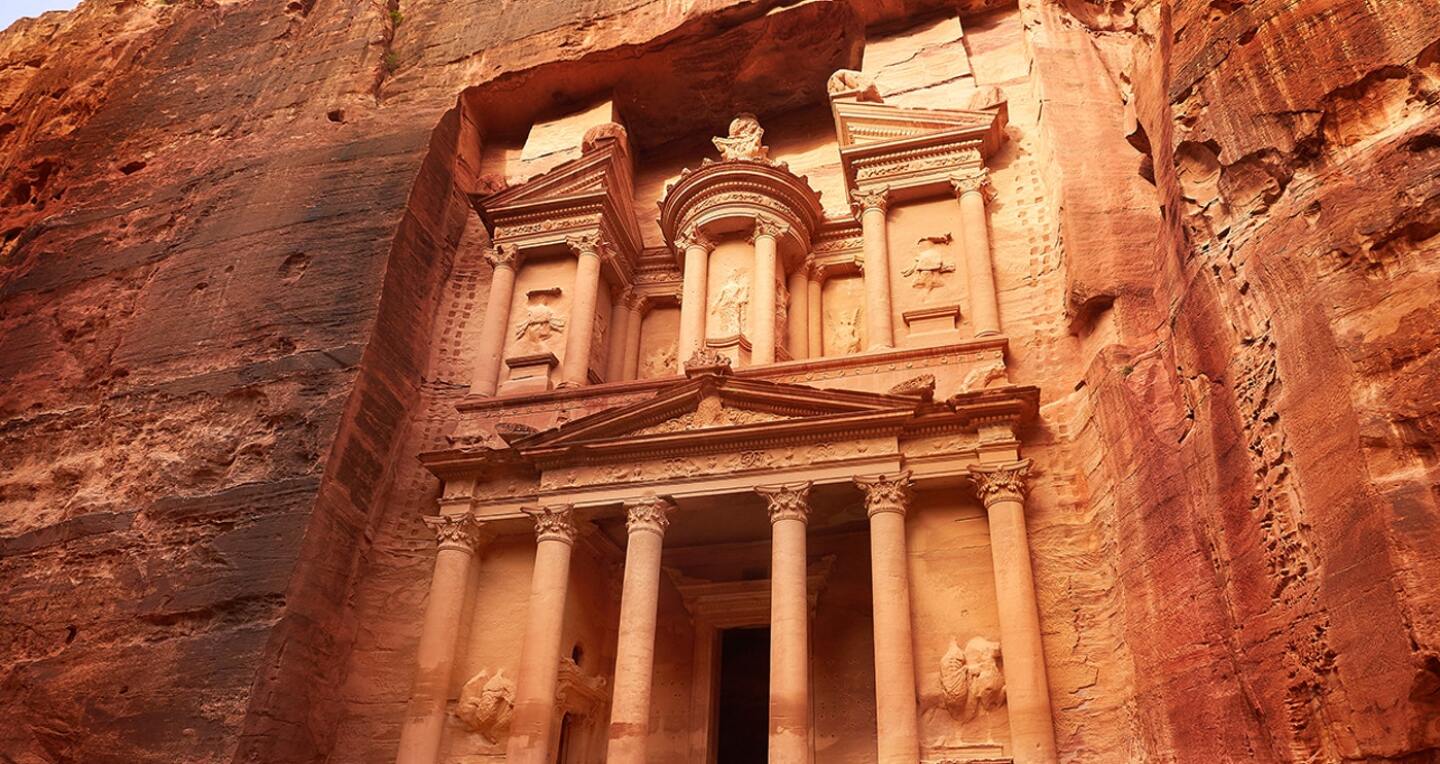
DAYS 19 AND 20Petra and Wadi Rum, Jordan
The Nabatean people who built Petra carved their treasuries, temples, and tombs into the sides of cliffs along desert gorges. For historians and archaeologists, the city is remarkable for its combination of Hellenistic and Eastern influences. For most visitors, the site is simply enchanting. You’ll have the opportunity for both early-morning visits (before other visitors arrive and when the temperatures are the coolest), or ones later in the day (if you want to spend time resting at the Mövenpick Nabatean Castle Hotel, your base in Petra).
Other activities on your Petra stop include a hike to the so-called Monastery (though it was most likely a temple when it was used by the Nabatean residents of Petra). The Monastery is a short distance from the other sites of Petra, so it’s typically less crowded. (It’s also possible to visit it by camel or donkey, if you want to skip the hike.) Wadi Rum is often associated with Lawrence of Arabia, who spent much of his life among the Bedouin tribes there, but its history traces back millennia, as can be seen in the petroglyphs found carved into stones in the desert. On your 4x4 truck excursion, you’ll be awed by the almost lunar landscapes before you stop for tea in a Bedouin tent.
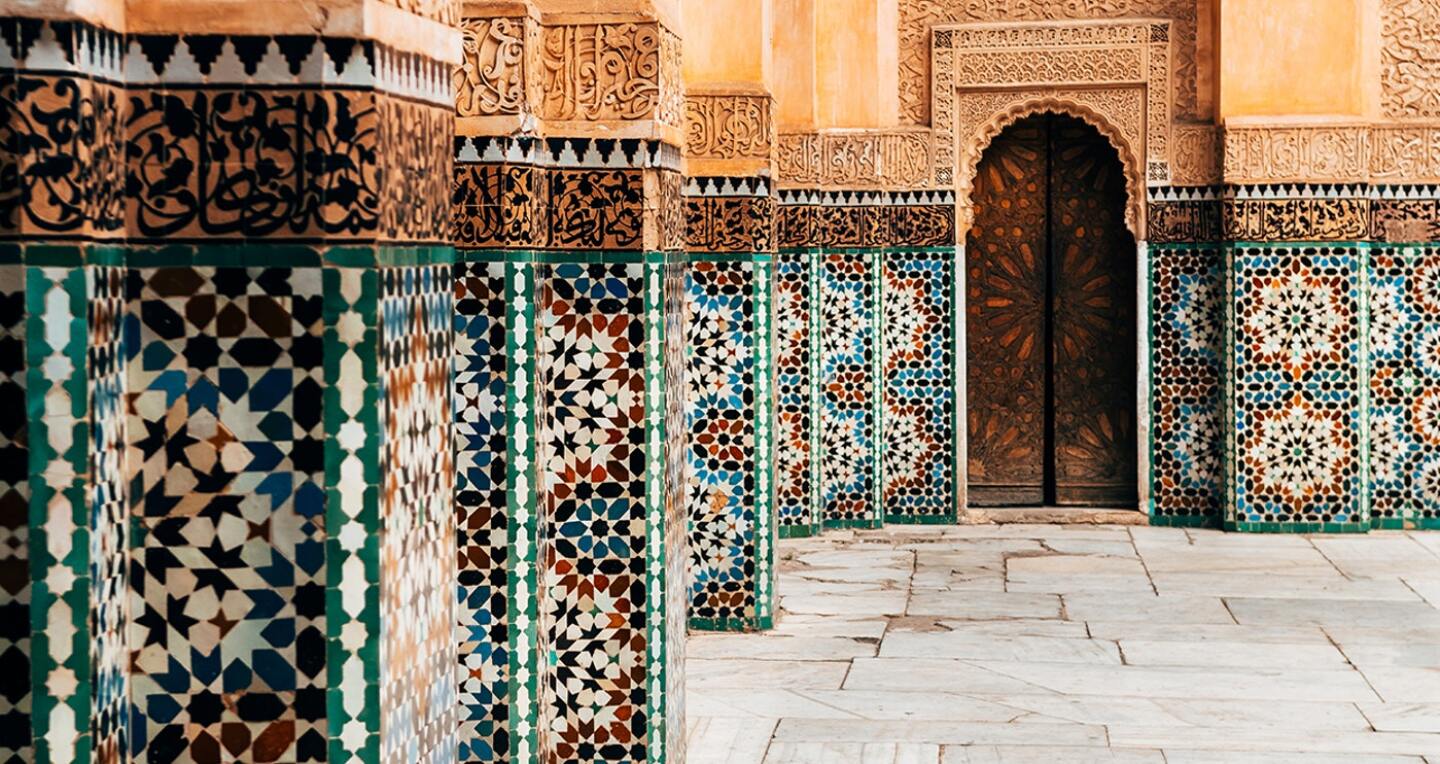
DAYS 21 AND 22Marrakech, Morocco
In the 20th century, it also become known as a destination for European and American artists, writers, and musicians, drawn by the intoxicating energy of the Jemaa el-Fna, the marketplace that bustles with snake charmers, magicians, and merchants from desert tribes. And as you wander the narrow alleys of its medina and admire the glittering goods sold by merchants, it’s easy to understand why painters and photographers have been enchanted with the city and its dazzling scenes.
Your base in Marrakech will be the gorgeous Four Seasons Resort, home to Moorish gardens and tranquil swimming pools. Relax in your private guest room, treat yourself to a traditional ghassoul clay cleansing ritual at the spa, or savor some Mediterranean and African cuisine at the resort’s restaurants.
During your time in Marrakech, you can choose from a number of excursions: shopping in the city’s fabled souks or exploring the madrasas, palaces, and mosques that reflect the wealth of merchant families over the centuries. Travelers passionate about gardens will want to visit the Majorelle Garden that dates from the 1920s. Designed by French painter Jacques Majorelle, and famous for its raised paths, many fountains, and exuberantly colorful plantings, the gardens had long been neglected until designer Yves Saint Laurent and his partner Pierre Bergé paid for their meticulous restoration. If you want to venture farther afield, an excursion to the Atlas Mountains includes stops in several villages and a traditional lunch before returning to the city.




